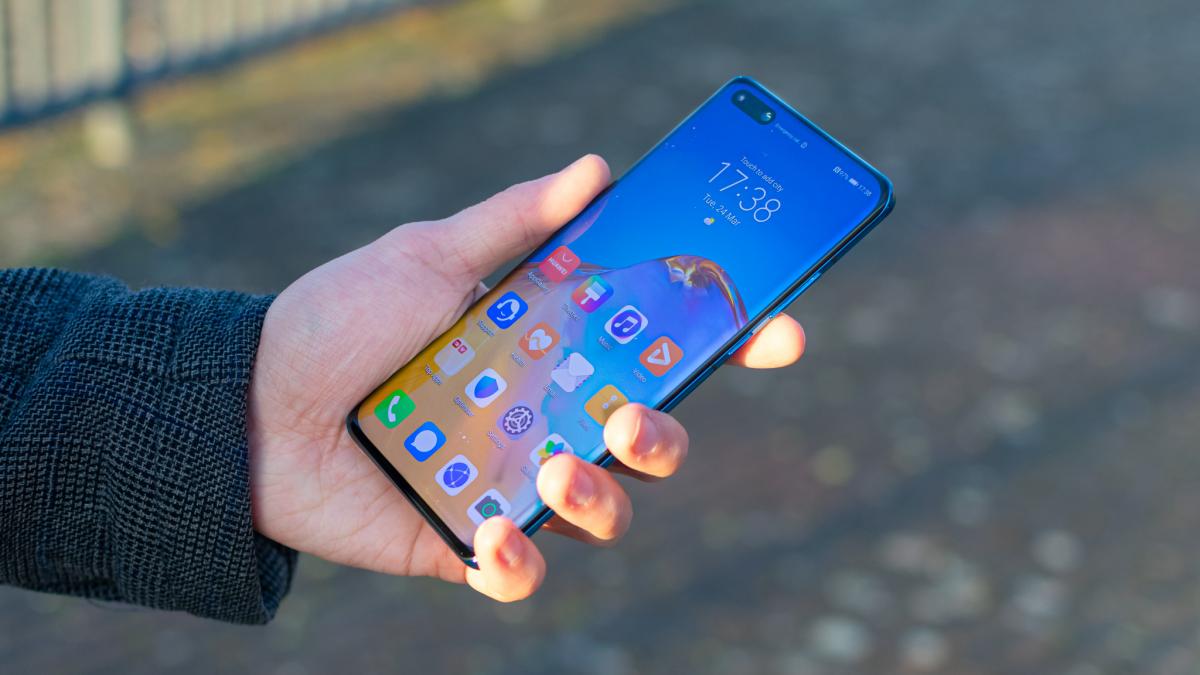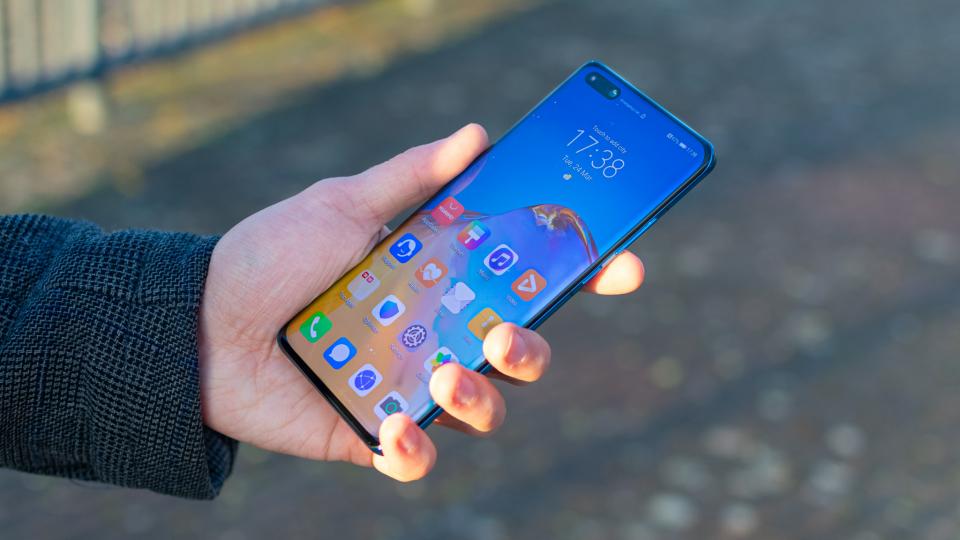
We’ve been testing the Huawei P40 Pro for a couple of days: here’s what we think so far
Huawei’s tumultuous relationship with the US government shows no signs of stopping. Its latest line of high-priced smartphones, the Huawei P40 series, represent a number of firsts for the company, but since they’re launching without Google’s core suite of Android apps (amongst other software restrictions), they’re just as unappealing as the Huawei Mate 30 was last year.
However, I’ve been using the Huawei P40 Pro for the last couple of days and I’m increasingly impressed with the hardware that Huawei is bringing to the table this year. Although, yet again I have some serious reservations about the software offering.
Huawei P40 Pro review: UK price, release date and specifications
- 6.58in, 90Hz, 19.8:9, 2,640 x 1,200 screen (441ppi)
- Octa-core 2.86GHz HiSilicon Kirin 990 processor
- 8GB of RAM
- 256GB of storage (Nano Memory expansion)
- Quad rear camera: 50MP (f/1.9), 40MP(f/1.8) wide, 12MP (f/3.4) 5x telephoto, depth sensor
- Hybrid zoom up to 50x
- Selfie camera: 40MP (f/2.2)
- 4,200mAh battery
- IP68-rated waterproofing
- Black, Ice White, Deep Sea Blue, Silver Frost, Blush Gold
- UK release date: 7 April
- UK price: €999
Huawei P40 Pro review: Design, key features and first impressions
Of course, it’s not all about the operating system, and I figure it might be best to talk about everything else before I rattle on about the potential pitfalls of picking up a phone that only runs the open-source version of Android. You won’t be surprised to hear that the P40 Pro is everything we’ve come to expect from Huawei up until this point – it’s the sort of phone that sits in the upper echelons of the flagship tier, and you can tell as such just by looking at it.
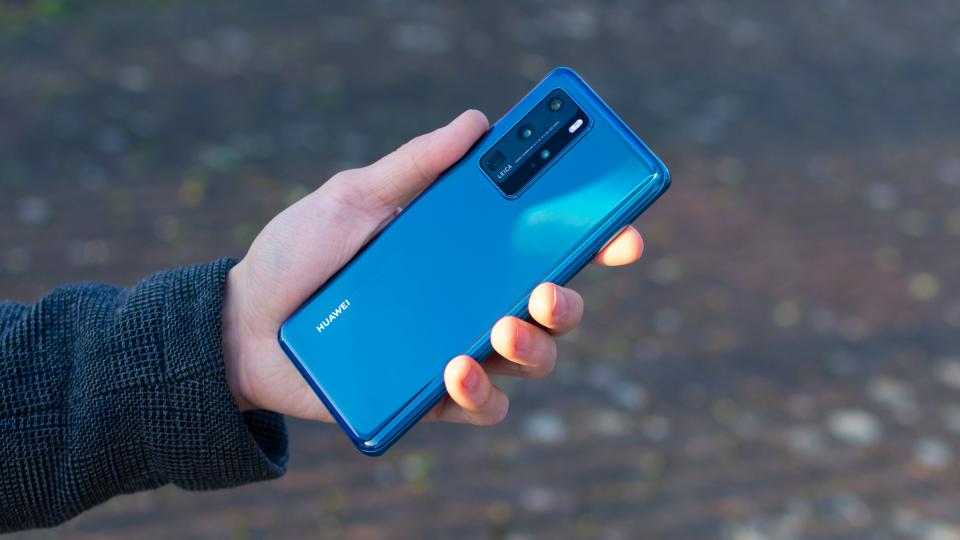
Surprised? You shouldn’t be. Huawei has often done a splendid job with the look and feel of its premium-priced handsets, and the P40 Pro looks as swish as ever with its diamond-cut edges, smooth lines and generously sized wraparound screen. The plain ‘Black’ and ‘Ice White’ colours are nice enough, but the multi-colour shimmering options are genuinely heart-stopping. Our ‘Deep Sea Blue’ review model, in particular, gives off a dazzling oil-slick effect whenever the light bounces off the rear panel.
Whichever colour you opt for, though, the rest of the design is the same. I do quite like the rectangular camera unit on the back – squeezing in a total of four cameras – which blends nicely into the rest of the handset with its ramped sides. Huawei says this effect is supposed to look like the profile of a volcano, and I’m inclined to agree.
Next up is the P40 Pro’s new ‘Overflow’ display. Huawei calls this a “quad-curve” design, because the 6.58in screen not only wraps around the sides of the phone, but also the top and bottom. The curvature isn’t quite as dramatic as the Mate 30 Pro’s 88-degrees and I don’t see there being any tangible benefits when it comes to usability, but it’s a pleasant design decision nonetheless.
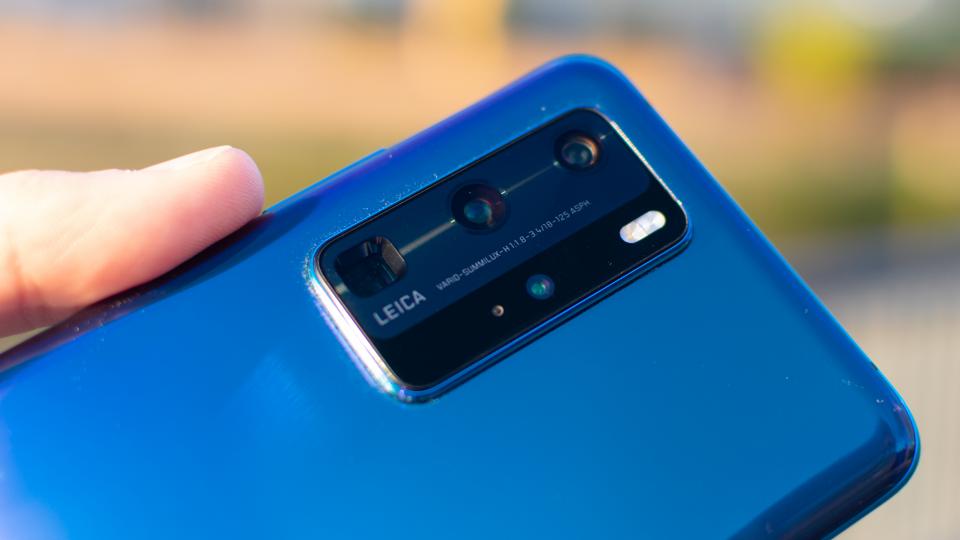
One word of caution before we continue, however. Huawei’s marketing images suggest that the screen completely fills the front of the phone – aside from the left-mounted hole-punch cameras – but that isn’t really the case when you see it in person.
You’ll immediately notice the four chunky corner bezels when you pull the phone out of the box. Likewise, whenever I launched the on-screen keyboard, the edges were cut off. It’s worth bearing in mind that this is running early software, however, so I expect these kinks to be ironed out before release.
This is also Huawei’s first smartphone with a high refresh rate screen. Like last year’s OnePlus 7T, the P40 Pro is fitted with a 90Hz display, with an unusual long-tall resolution of 2,640 x 1,200. Faster refresh screens have started trickling in across the industry in recent months – I wouldn’t be surprised if this year’s iPhone has one – and the P40 Pro’s OLED panel is an absolute joy to swipe, tap and scroll on.
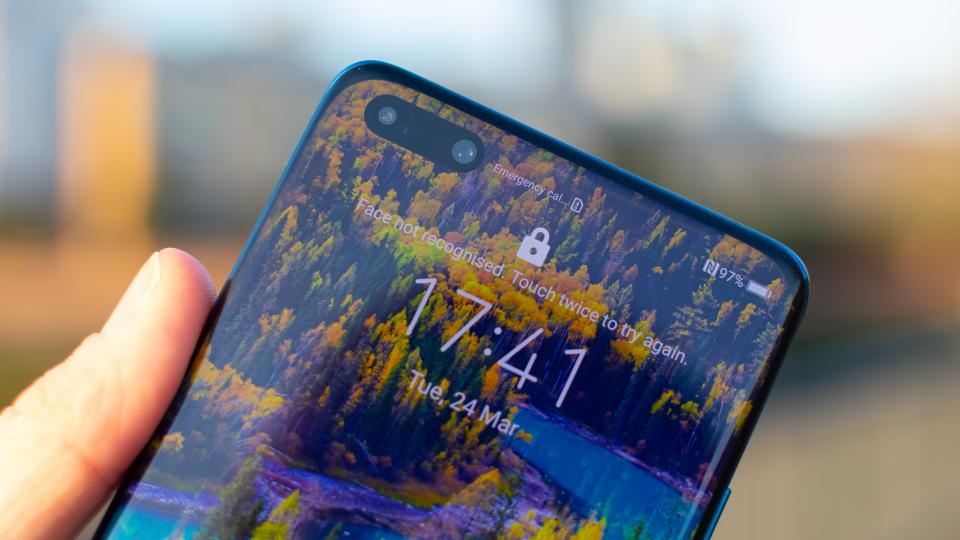
Naturally, the P40 Pro is powered by Huawei’s fastest-ever mobile chipset, the Kirin 990. This is a new eight-core chip that’s built using a 7nm fabrication process – which we first saw in the Huawei Mate 30 Pro – with the cores split into three groups: two performance-based Cortex-A76 cores running at 2.86GHz, a further two mid-power cores running at 2.36GHz; and four Cortex-A55 based cores running at 1.95GHz.
How do these numbers translate to real-world performance? Well, when testing the Mate 30 Pro last year, I found the Kirin 990 to be roughly 16% faster in multi-core processing when compared with the previous generation Kirin 980 (which powered the P30 Pro). Huawei’s own app store might be limited at the time of writing, but the P40 Pro will likely be able to run anything you throw at it without breaking a sweat.
Huawei P40 Pro review: So many cameras
Before we discuss the haves and have-nots in terms of the software package, it’s worth paying close attention to the real star feature: the quadruple Leica camera array. To start with, the primary camera is a 50-megapixel (f/1.9) affair, which sits next to a 12-megapixel (f/3.4) 5x telephoto zoom lens. Both are optically-stabilised and employ the less commonly used RYYB filter, replacing the green elements of the filter with yellow.
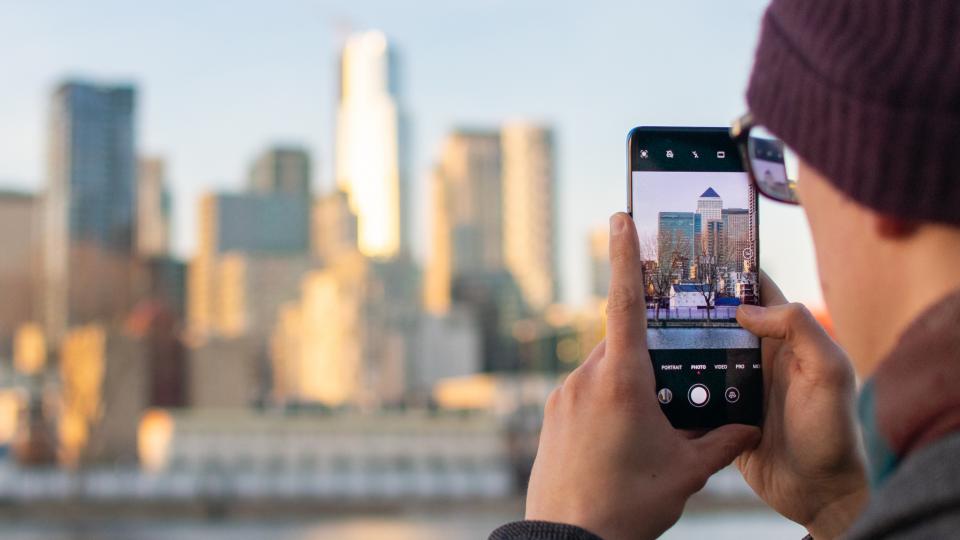
Huawei calls this “SuperSpectrum” imaging, and we first saw this shooting technique in last year’s P30 Pro. Theoretically – according to Huawei – images should look better in low-light when compared with pictures captured using a camera unit with an RGB Bayer filter. The two cameras are accompanied by an extra 40-megapixel (f/1.8) wide-angle lens and a ToF sensor for more effective blurred background portraits.
Huawei P40 Pro review: A life without Google
Finally, let’s talk about software, or lack thereof in Huawei’s case. The Huawei P40 Pro is using Android 10 as its base operating system, but due to the US trade ban on Huawei, and Google’s subsequent restrictions on what companies it can work with, this is only the open-source version of the OS. This means that Google’s first-party applications on the Play Store (the service isn’t available) such as Maps and YouTube can’t be downloaded and aren’t preinstalled. As we saw with last year’s Mate 30 Pro – which is the first phone we reviewed with this problem – there is a way you can install these applications via unofficial sources, but this is ultimately a very risky and confusing process for those that aren’t in the know.
Huawei insists that this restriction won’t get in the way. The App Gallery – Huawei’s version of the Play Store – has its own app alternatives after all. However, scroll through the list of apps that are available for download in Europe and it’s clear that this list is sorely lacking popular applications that are widely used in western markets. TikTok is on there, but you certainly won’t find Facebook, Twitter, Instagram or the like.
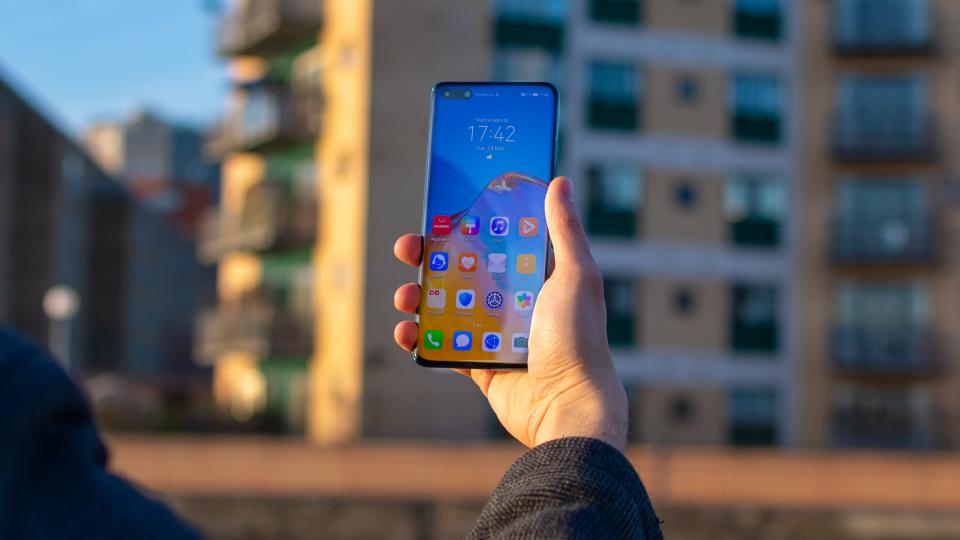
Huawei also says that you can simply use these apps in the phone’s web browser, but anyone that’s ever used YouTube via this method knows that this is a hellish experience. So, that workaround is basically a write-off, too.
I’ve been told that Huawei is working with app developers in order to copy application launchers over to Huawei’s storefront and I wouldn’t expect this transfer process to be too time-consuming for your average developer either, when you consider that Huawei’s phones are still running the same OS. Perhaps the state of the App Gallery will have changed dramatically in 12 month’s time? Who knows.
Huawei P40 Pro review: Early verdict
What I do know is that preordering the Huawei P40 Pro is a risky venture. Launching a high-priced flagship phone without access to popular apps isn’t an appealing move, and if the frosty reception to last year’s Mate 30 Pro launch offers any indication, I’m struggling to see any scenario where Huawei might benefit.
But of course, I remain entirely sympathetic. In a global marketplace, it’s entirely unfair to single out a foreign company and heavily impose restrictions on them. Huawei – and sub-brand Honor – are making the best of a bad situation, and I applaud them both for their efforts.
Alas, sympathy isn’t a big enough reason to buy a phone. I would like to be optimistic – the Huawei P40 Pro might be able to stand up on its many merits – but as it stands I can’t see many of these flying off the shelves when it launches in a few weeks, especially if Huawei expects you to pay top dollar for them.
